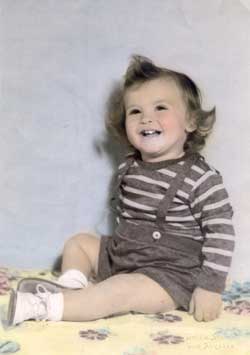 I have blogged about the long-time brick walls I faced for almost 15 years with my dad’s family history, both on his father’s Robledo paternal line (hence the one-name study I just started last month), and on both of his mother’s lines. If you are a regular reader, you know that in May 2013 I had a major breakthrough on Dad’s maternal line, and have been on quite a roll since.
I have blogged about the long-time brick walls I faced for almost 15 years with my dad’s family history, both on his father’s Robledo paternal line (hence the one-name study I just started last month), and on both of his mother’s lines. If you are a regular reader, you know that in May 2013 I had a major breakthrough on Dad’s maternal line, and have been on quite a roll since.
Venturing into DNA
Because of these brick walls, particularly his main Robledo paternal line, I had Dad take an AncestryDNA autosomal test (DNA from both sets of parents, all ancestors) back in January 2014, in hopes of identifying others researching his same lines. The results were processed in March 2014, and I have occasionally checked back to review new matches, but never really did anything with these results because I didn’t really know much about genetic genealogy. So at last month’s combo RootsTech and FGS conferences, I attended as many DNA sessions as possible, and felt equipped to now start doing something with Dad’s results. I say something, because I am still a total newbie at this.
The first thing I did — literally, the morning after I flew back home — was download Dad’s raw AncestryDNA data and transfer it to Family Tree DNA (FTDNA) to get a second analysis run against the data, and a second database of genetic matches. Unfortunately for me, FTDNA was in the midst of big time computer glitches, and it took them 3 weeks to process Dad’s results, then almost another 3 days for them to unlock those matches after I paid for that service. This process likely would have taken longer had I not repeatedly called FTDNA, retrying after many busy signals, and sitting on hold for long periods of time. All his FTDNA data finally became accessible to me this past week!
I will delve deeper into this journey, but the first step was a comparison of how each company analyzed Dad’s ethnic origins.
Ethnicity Comparison
What Dad Thought
Dad and I always knew about his Mexican origins; his paternal grandparents immigrated from there in the 1910s. He had always heard that his mother was born in Arizona, but we assumed Mexican origins for her as well. Consequently, we assumed Spanish ancestry for both of these lines. Don’t all Hispanic surnames trace back to Spain at some point? Maybe not, I don’t know. We are both highly confident that his ancestors did not all have pure Spanish blood. Like most Spanish New World families, those who might have had pure Spanish or even European blood had to have ultimately married into the indigenous populations, producing Mestizos.
The other thing Dad always heard is that the Robledo surname had some Sephardic Jewish blood, which seems possible due to the Sephardim presence on the Iberian Peninsula.
What DNA Tells Us
The analyses from AncestryDNA and Family Tree DNA are pretty similar, which is reassuring. They just label and break down ethnic origins a bit differently. Ancestry also provides estimates for much smaller sub-regions. Although from what I learned at RootsTech and FGS, estimates at these smaller regional levels are not considered very accurate.
| AncestryDNA | Family Tree DNA |
|---|---|
| Europe 59% | European 65% |
| Iberian Peninsula 26% | Southern Europe 60% |
| Italy/Greece 23% | Scandinavia 5% |
| America 33% | New World 21% |
| Native American 33% | Native American 21% |
| Africa 4% | African 1% |
| Africa North 3% | West Africa 1% |
| Senegal 1% | |
| West Asia < 1% | Middle Eastern 3% |
| Middle East < 1% | North Africa 3% |
| Asia 3% | East Asian 9% |
| Asia Central 2% | Northeast Asian 9% |
| Asia East 1% |
Both identify European origins as Dad’s primary ethnicity. Ancestry breaks this into two sub-regions: the largest being the Iberian Peninsula (Figure 1), but Italy/Greece (Figure 2) comes in close behind. Iberian Peninsula is no surprise. We expected this, based on Spanish assumptions. The high estimate for Italy/Greece came as a surprise though, since we have never heard of Dad having ancestors from this region. However the close proximity of these two regions as well as the Roman conquest of the Iberian Peninsula could account for this. FTDNA’s Southern European region includes both the Iberian Peninsula and Italy/Greece (Figure 5).
The Scandinavian part of those European origins is a big surprise. Although each company only estimates Dad’s DNA to have a possible trace amount: FTDNA at a 5% estimate (Figure 6) and Ancestry at less than 1% (Figure 4).
Not surprisingly, both companies rate Native American (indigenous peoples) ancestry as Dad’s second largest ethnic region of origin, in the New World (the Americas). What is surprising, is their discrepency in numbers. Ancestry estimates 33% (Figure 3) while FTDNA only estimates 21% (Figure 7). But this discrepancy might be due to what geographic areas each company counts as Native American. FTDNA (Figure 7) only classifies western Canada, the western U.S., Mexico, Central America, some of the Caribbean, and the small northwestern portion of South America as Native American. Ancestry classifies Native American as most of Canada and the U.S.; all of Mexico, Central America, and the Caribbean; and all but the southern tip of South America (Figure 3). FTDNA classifies less than half of New Mexico as Native American in origin (?!). Maybe I am interpreting these maps wrong? Perhaps our New Mexico ancestors just had more European ancestry than our California or Mexico ones.
The African, Asian, and Middle Eastern estimates get harder to interpret because the estimates are much smaller, and because each company classifies these differently. Ancestry puts North Africa as a sub-region under Africa, while FTDNA puts it as a sub-region under Middle Eastern. Yet Ancestry identifies the Middle East as a sub-region of West Africa.
What about Dad’s hunch that he has Sephardic Jewish ancestry? FTDNA either does not provide estimates at this level, or Dad didn’t even rate at less than 1% with them. Ancestry estimates that Dad has 3% European Jewish ethnicity in his DNA. No clue at this point if this is from his father’s side, or his mother’s side. No idea if this is Sephardic, Ashkenazi, or a mix of both since Ancestry does not make such a distinction. However, since his main regions of European ethnicity were historically home to Sephardim, I will assume Sephardi ancestry.
AncestryDNA
Following are the visual representations for how AncestryDNA interprets Dad’s ethnicity. See this blog post from Ancestry.com to learn how they estimate ethnicity.
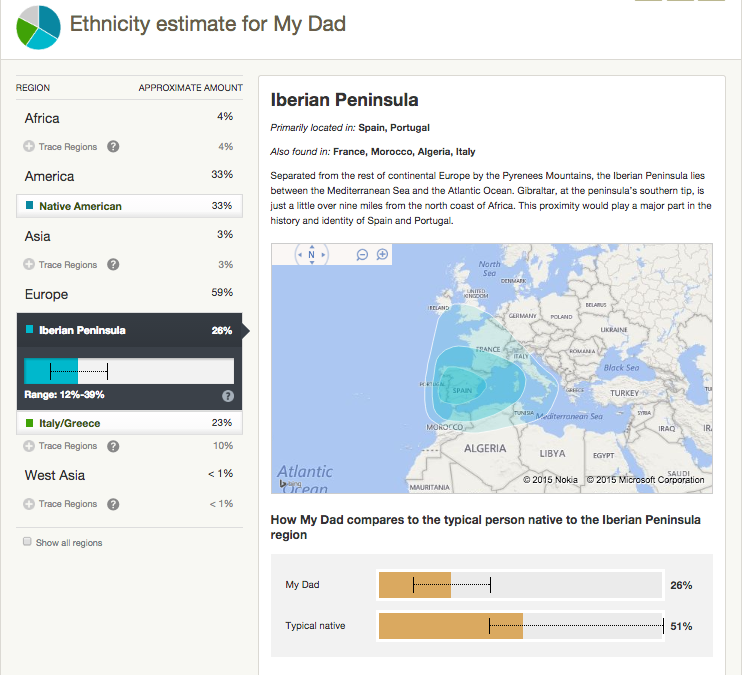
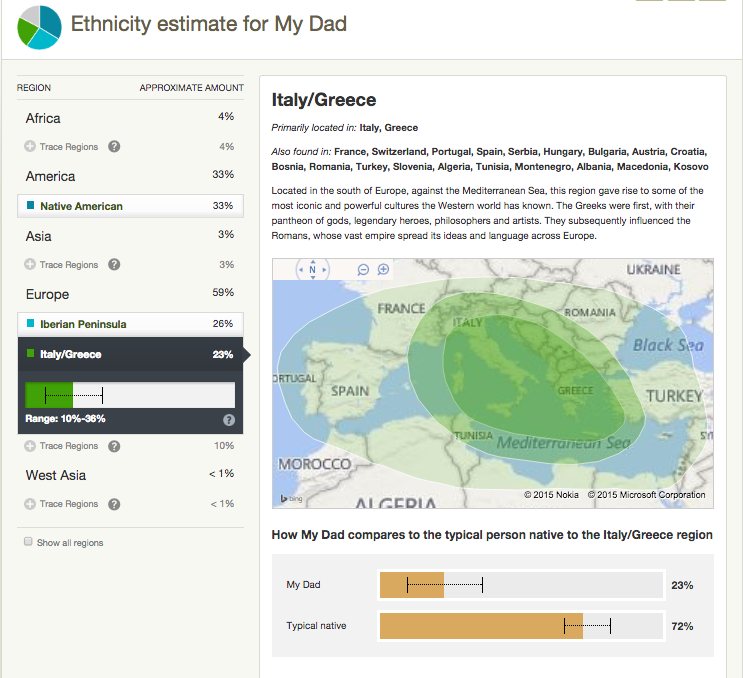
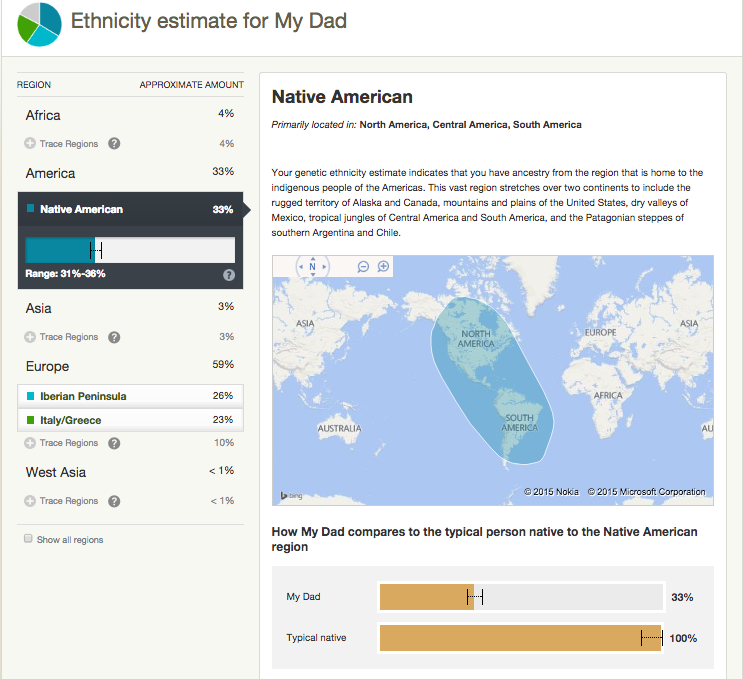
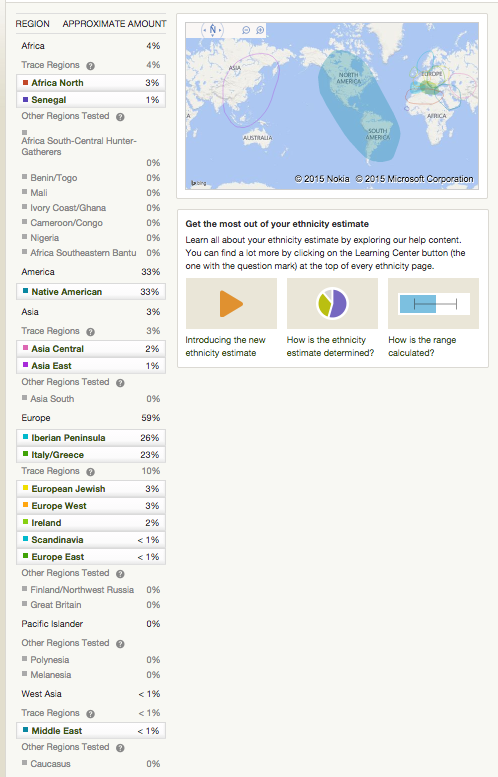
Family Tree DNA
Following are visual representations of how FTDNA interprets Dad’s ethnicity.
Note that FTDNA shows you Family Finder Matches, genetic cousins in their database, who share your ethnic origins for your top three ethnic groups.These get displayed on the maps as Shared Origins (I have blocked out the names and faces of my matches, to respect their privacy). FTDNA members must opt-in to allow matches to see their ethnicity as Shared Origins. AncestryDNA does not provide this type of visual aid for genetic cousins and ethnic origins; you have to open up each individual cousin match to see their ethnicities.
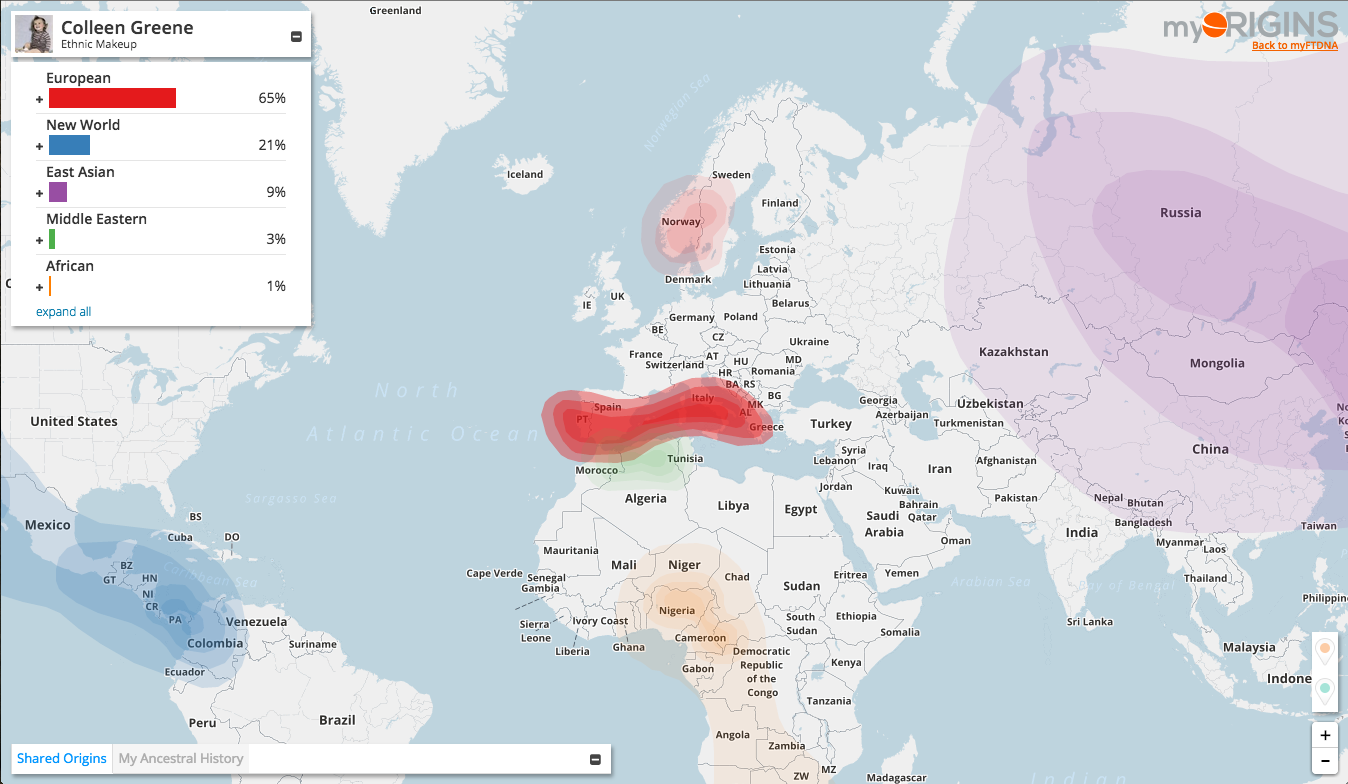
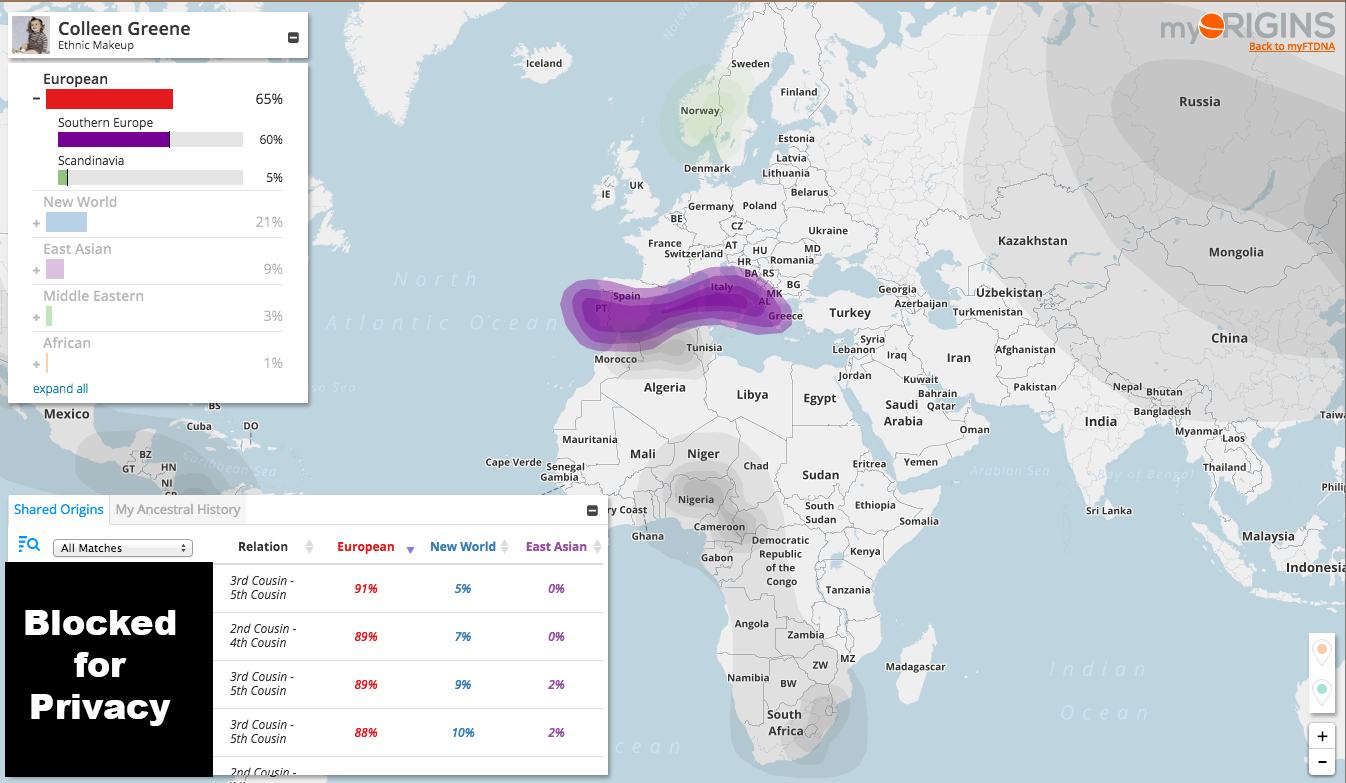
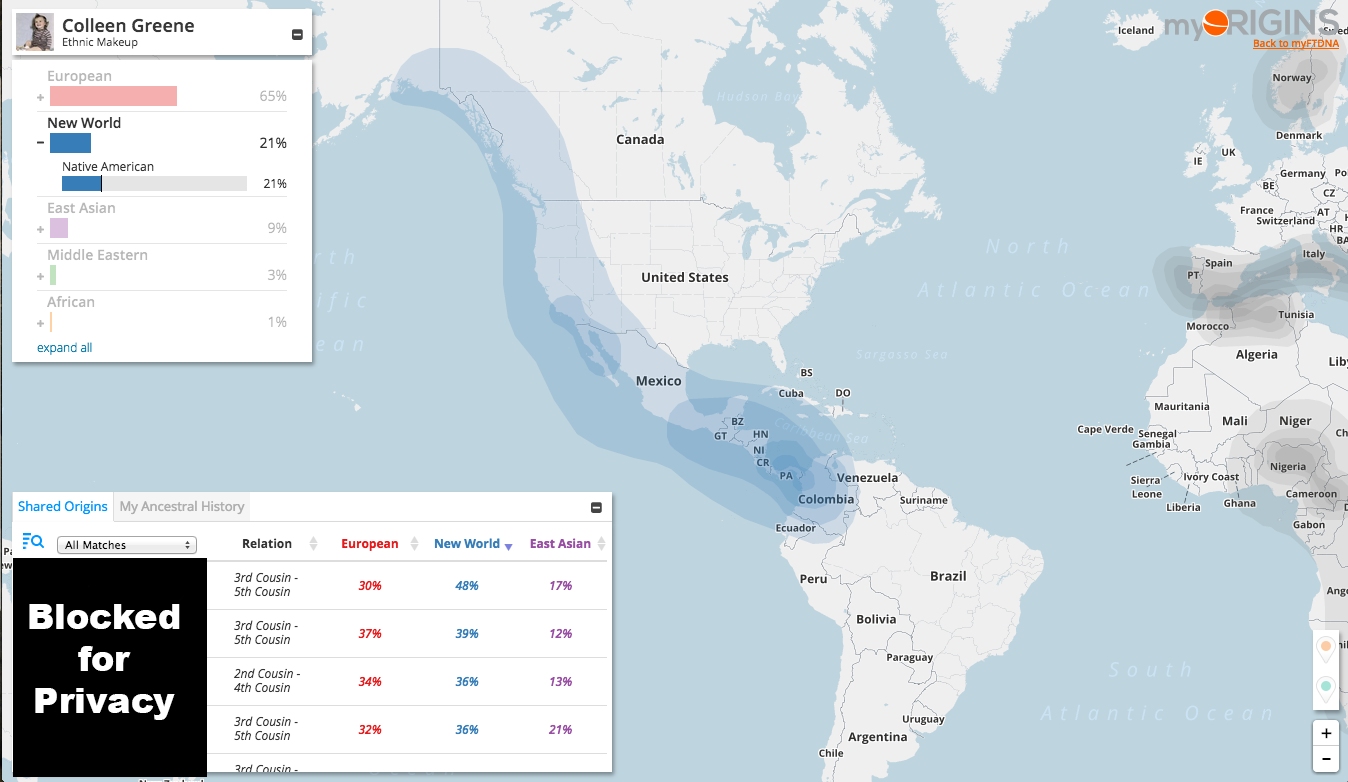
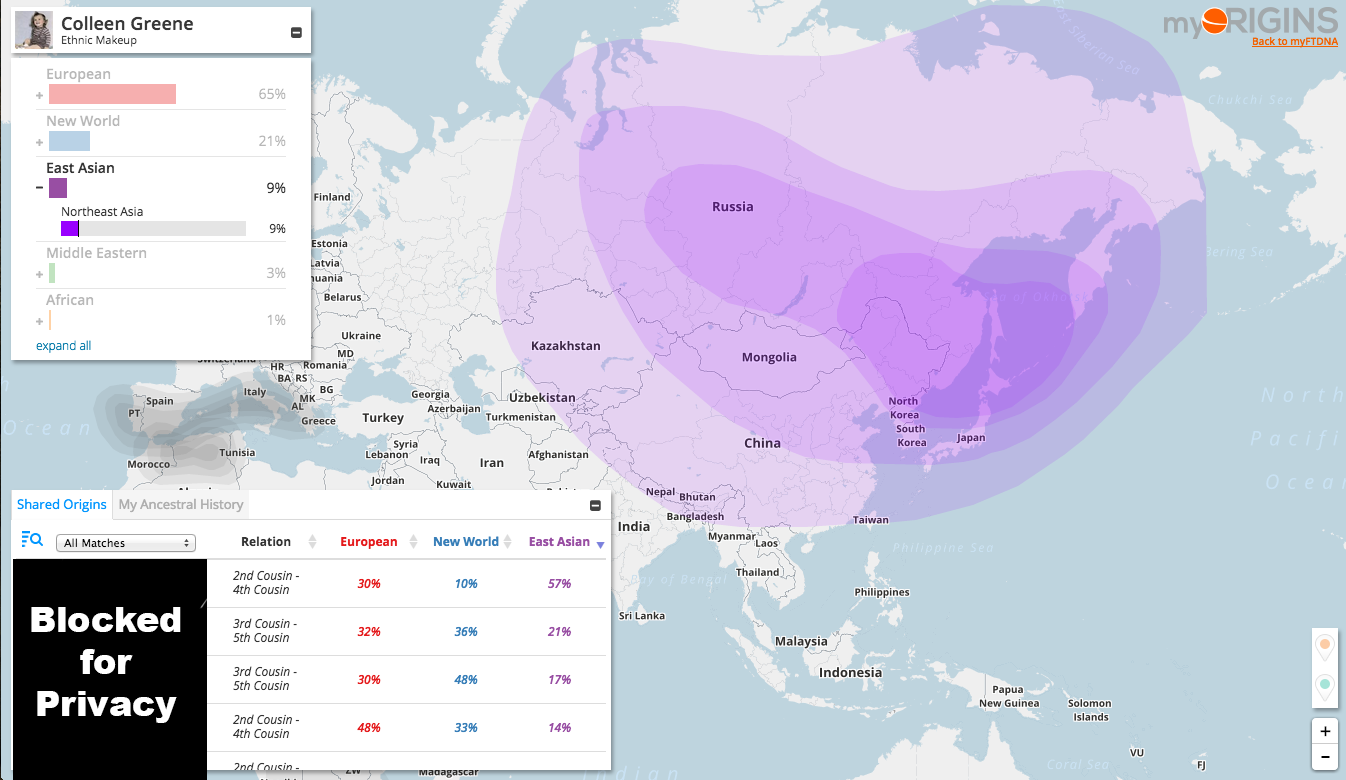
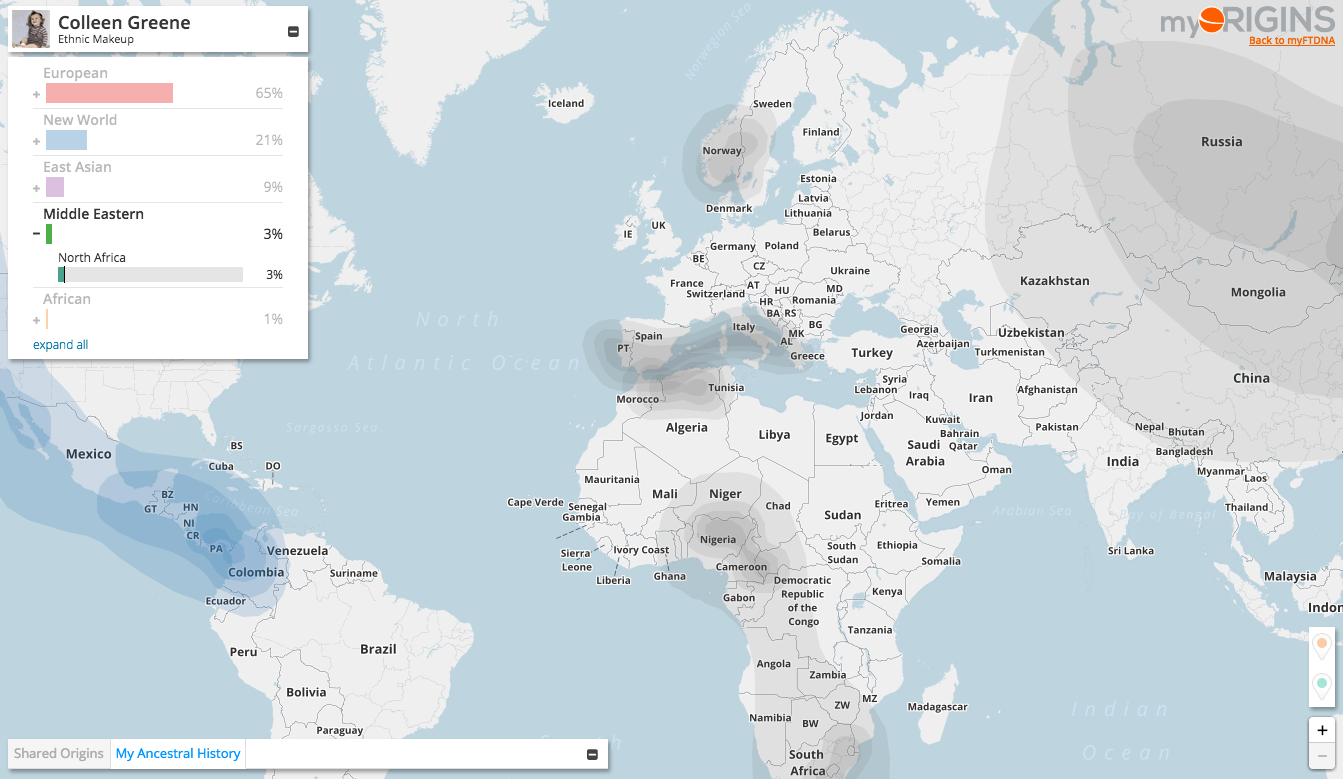

What Next?
Now comes the hard part with the autosomal results, reviewing all the matches in both AncestryDNA and FTDNA to try to find common ancestor(s). I have already uploaded the raw autosomal data to GEDmatch, but need to learn how to actually use that tool.
I have also ordered a Y-DNA test from FTNA for Dad to further trace his patrilineal line. And although it won’t help me trace his maternal line, I have an mtDNA kit to test one of his paternal female first cousins, which will help me trace Dad’s paternal grandmother’s matrilineal line. I still need to identify someone who could do matrilineal testing on Dad’s mother.
And I need to start on Mom’s DNA testing, of course!
Hi, the 0.3% difference between Iberian Peninsula and Italy/Greece is not common among what Spaniards on AncestryDNA get, they do score Italy/Greece but not that high or at least they do not score at a almost similar percentage as their Iberian Peninsula, they usually have a 30-60% difference, Southern Spaniards having a 30% difference at most while the more northern you go, the smaller the Italy/Greece percentage becomes.
So here is the thing, the only Iberians I have seen so far score higher Italy/Greece than Iberian have been the Portuguese (note: this is only the case for those from the Azores Islands). The Portuguese Jews who settled in Mexico were coming majority from the Azores Islands because there were around a few conquistadores/captains from those islands who later founded cities in Mexico, especially those in the Northern part. You should read about the story of Luis de Carabajal y Cueva, he was a Portuguese Sephardic Jew from the Northern part of Portugal. The people recruited by Carvajal in Spain and Portugal were transported to the New world in a ship, an Urca, owned by Carvajal and named La Urca de Panuco. The urca left Seville on 10 June 1580 and arrived in Tampico on 24 August of the same year. The ship was filled with Sephardic Jews from Spain (Southern Spain) and Portugal(Southern Portugal), he was not the only Portuguese Jew in Mexican history that decided to bring large ships filled with Jewish people from both countries.
Interesting enough, AncestryDNA came out with a study that showed Mexicans with Portuguese Jewish heritage, you can read about it here
https://genetiker.files.wordpress.com/2014/03/amerindian-i-m26.pdf
“A similar survey of over 80,000 mtDNA sequences confirmed a migration of Jews from Portugal to Mexico.”
Please check out my thread if you like, it will give you a lot of insight on this
http://www.forumbiodiversity.com/showthread.php/44809-Sephardics-and-their-COA-matches-with-Latinos
I would also like to mention that I have a friend who also had a similar Iberian and Italy/Greece difference as your father, his last name is of Portuguese origin, this surname came into Mexico via the Jewish Portuguese who settled in the Northern part of Michoacan
http://i.imgur.com/sXcG9wD.png
Hello Colleen,
Thanks for sharing your findings about your family’s DNA! I’ve been looking through my mother’s side and I took Ancestry DNA tests for my mom and aunt (different fathers). My mother’s family has been in Honduras and Nicaragua for generations, but as you must know it’s hard to find family records in Latin America for various reasons.
I was so surprised when my aunt’s test showed pretty much the same regions as your fathers! The percentages are a little different (my family has more Native American and a little more African). Your dad’s test is actually closer to mine (btw. my dad only had two major colors on his pie chart Western European and Great Britain, I only managed to have 8% from G.B. lol).
My mom’s test didn’t show European Jewish traces (but it did show the regions where Sephardic people lived Middle east, North Africa, Central Asia, Southern Europe). My aunt had about 3% European Jewish so it was a big family surprise for us all. It was a greater surprise when my test showed trace amounts of European Jewish DNA (less then 1%, which makes sense but the range they gave me was between 0-3% which matched my aunt’s average). It’s not rare that people with some Sephardic roots would have low “European Jewish” DNA on Ancestry. Apparently I found out the DNA is based on people from Ashkenazi backgrounds (mostly Eastern Europe). Sephardic people are a mix of so many backgrounds, not to mention if they came to the Americas.
So the fact that you have all these regions represented and found trace amounts is a pretty good indication that you have Sephardic roots. Best of luck!
So what’s the difference between a New World and a Native American DNA?Why when it comes to DNA test and you have some degree of native American, they circle the whole American continent as if it were a single genetic compound, when in reality there is a big genetic difference lets say between an Aztec than a Maya (nose, face, body, stature, etc) or an Apache from an Inca or Skimo and a Comanche, when in Europe (a smaller territory than the Americas) there is a big difference lets say between an Iberian than from an Italian and a Greek, which are very close from each other.